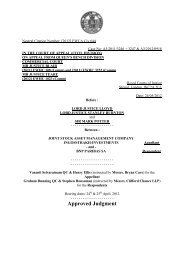EDUCATION FOR THE GOOD SOCIETY - Support
EDUCATION FOR THE GOOD SOCIETY - Support
EDUCATION FOR THE GOOD SOCIETY - Support
Create successful ePaper yourself
Turn your PDF publications into a flip-book with our unique Google optimized e-Paper software.
Outflanking all opposition, Fabian SidneyWebb’s vision of a ‘ladder of opportunity’ andthe making of a meritocracy that it encapsulateddo much to explain tensions in the currentprovision, with its roots in the hierarchy of valuesof Victorian administrators, founded in theirturn on the Aristotelian–Platonic philosophythey studied in public schools: ‘The world isgoing your way at present, Webb, but it is not theright way in the end,’ William Morris told Sidneyin 1895. 13There are different versions of the prescriptionfor the Good Society and prescriptions forrealising it. Morris and others felt that it wasnot wealth that civilisation had created butriches. Shocked by the social consequences ofindustrialisation, Morris’s dreams were of asocialist utopia that would provide for all itscitizens a free and full life, with pleasurableand useful work, a decent standard of living,and leisure for art and recreation. For Morris,education was a completely dominating centralconcern needed to prepare people both forsatisfying work and proper use of leisure. Incommon with Tawney after him, Morris insistedon equality of condition rather than equality ofopportunity.Tawney was politician and educationalreformer Shena D. Simon’s great politicalmentor. In common with Morris, Tawney andher son, Brian, Shena Simon was committed toa belief in human educability, an insistence onthe right of all human beings to develop theirintelligence and responsibility. While Tawneyadvocated ‘secondary schooling for all’ in the1920s, he assumed there would be different typesof schools. Shena Simon began arguing for acommon secondary schooling in the 1930s,optimistic that the common school could createsocial cohesion and provide the space in whicha democratic community could be attained.Against the grain of ideas of class power andclass disadvantage that dominated the left radicalagenda, she was also overtly feminist, promotingequal opportunities for women and girls. 14By the 1960s, the weight of support forcomprehensive schools grew out of the experienceof teachers, children and parents at the hands ofa divided education system, which not only failedhuge numbers of young people, but also restedon spurious educational thinking (to do withIQ testing) that was perceived as riddled withfailure. However, particular attention was paidto the structural framework of schooling that leftunanswered the question of what should be theguiding principle of comprehensive education.Equality of opportunity was conceptualised asgrammar school education for all or the searchfor new common principles and a distinctivecomprehensive learning programme. Weshould recall Bernard Barker’s advocacy thatthe ‘comprehensive experience’ ‘has to berescued from its own meritocratic assumptionsabout children and teaching before it can besaved from politicians, falling rolls or shrinkingfinances’. 15 Similarly, we should be in no doubtas to the nature and severity of the harm that willbe done to the education of current and futuregenerations by the model of higher educationof the Department for Business, Innovation andSkills, which may signal the return to a moreunequal distribution of cultural capital.Back to the futureTawney founded his conception of the GoodSociety on the principles of freedom, equality andsolidarity. Eighty years ago, he observed,‘The boys and girls of well-to-do parents…continue their education as a matter of course,not because they are exceptional, but because theyare normal and the question of the ‘profit’ theysucceed in deriving from it is left, quite rightly, tobe answered later. Working-class children havethe same needs to be met and the same powers tobe developed.’ 16Crucially, boys and girls are both much moresuccessful at school than in the 1920s and 1930swhen only one in five elementary school leaversreceived any kind of further education after14 years. If we move fast forward to judgethe comprehensive experience by the narrowcriterion of academic success, we find one in fivestudents gains at least one GCE A-level pass in1983, compared with one in seven who obtainedthis qualification during the 1960s. 17 However,when considering the life chances of all those whopass through the educational system, we shouldnot lose sight of the fact that young people from12 M. Vlaeminke, The EnglishHigher Grade Schools: A LostOpportunity, Woburn Press, 2000.13 R. Page Arnot, William Morris:The Man and the Myth, Lawrence& Wishart, 1964, p.108.14 J. Martin and J. Goodman,Women and Education, 1800–1980,Palgrave, 2004.15 B. Barker, Rescuing theComprehensive Experience, OpenUniversity Press, 1986, p.xvi.16 R.H. Tawney, Equality, UnwinBooks, 1931, p.143.17 C. Chitty (ed.), ‘The wayforward’, in C Chitty (ed.),Redefining the ComprehensiveExperience, Bedford Way Papers,1987, p.87.Education for the good society | 17


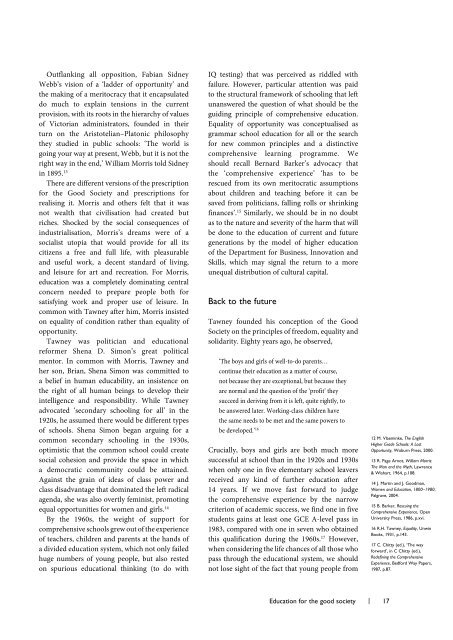

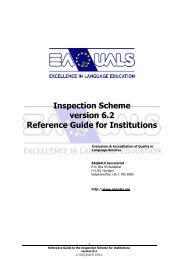
![[2012] UKUT 399 (TCC)](https://img.yumpu.com/51352289/1/184x260/2012-ukut-399-tcc.jpg?quality=85)

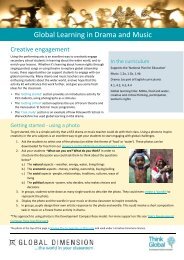

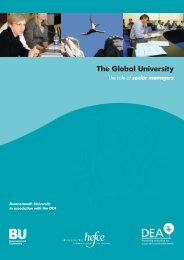

![Neutral Citation Number: [2009] EWHC 3198 (Ch) Case No: CH ...](https://img.yumpu.com/50120201/1/184x260/neutral-citation-number-2009-ewhc-3198-ch-case-no-ch-.jpg?quality=85)
